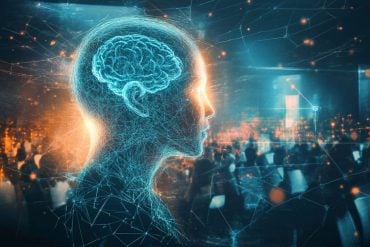Summary: A recent study identified multiple subtypes of Major Depressive Disorder (MDD) using brain imaging. Over 2,000 participants were involved in the study, which analyzed functional connectivity in the brain.
The findings reveal two distinct subtypes of MDD, each characterized by different patterns of brain connectivity, indicating the underlying complexity of depression. The work could help develop precise diagnostic and treatment strategies for each specific neurophysiological subtype of depression.
Key Facts:
- The study identified two distinct subtypes of Major Depressive Disorder, each characterized by differing patterns of brain connectivity.
- One subtype displayed severe positive deviations in the default mode network, limbic, and subcortical areas, and negative deviations in the sensorimotor and attention areas.
- These findings could pave the way for the development of imaging-based candidate biomarkers, which could guide precise diagnostic and treatment strategies tailored to each patient’s specific neurophysiological subtype.
Source: Elsevier
Major depressive disorder (MDD) is not only among the most common mental illnesses, affecting over 8% of Americans, but it is also extremely variable from one person to another.
Researchers have recently begun making strides toward understanding the neurophysiology underlying different subtypes of depression, which could speed development of better treatments, but much remains to be discovered.
Now, a new study in Biological Psychiatry identifies multiple subtypes of MDD using brain imaging.

John Krystal, MD, Editor of Biological Psychiatry, said of the work, “We have long known that disorders like major depressive disorder are highly heterogeneous. This study in a large sample of depressed patients provides leads that can be pursued in subtyping depression on the basis of functional magnetic resonance imaging (fMRI) tests that measure the degree of coordination across brain regions, also known as ‘functional connectivity.’”
The researchers used resting-state fMRI collected at multiple clinical sites from a large cohort of more than 1,000 MDD patients and over 1,000 healthy controls (HC). The study used the so-called normative model, which uses data from a large reference population to quantify individual deviations, much like the growth charts used by pediatricians.
The researchers examined the functional connectivity among brain regions and mapped individual functional deviations in the MDD patients compared to this normative prediction across the lifespan.
Senior author Mingrui Xia, PhD, from Beijing Normal University, said, “This approach led to the identification of two reproducible neurophysiological subtypes exhibiting distinct deviation patterns, depressive item scores, and longitudinal treatment predictability.”
One subtype of patients showed severe positive deviations – indicating increased brain connectivity – in the default mode network, limbic, and subcortical areas, and negative deviations in the sensorimotor and attention areas.
The second subtype of patients featured a milder and opposite pattern of deviation, highlighting the heterogeneity of depression at the neurophysiological level.
The authors speculate that the altered activity could be related to the tendency to ruminate in people with MDD.
The work is particularly exciting in that it moves the field toward finding biomarkers, or biological markers, of depression, which currently relies on patient-reported clinical symptoms for diagnosis, treatment, and prognostics. Biomarkers could offer a way to improve all these aspects of treatment for MDD.
Dr. Xia went on to say, “These findings shed light on the diverse neurobiological mechanisms from a connectomics perspective underlying the complex clinical heterogeneity observed in individuals with depression.
“The implications of this research are far-reaching, providing valuable insights into the development of imaging-based candidate biomarkers.
“These biomarkers have the potential to guide future precise diagnostic and treatment strategies tailored to each patient’s specific neurophysiological subtype.”
Dr. Xia noted, “By embracing the concept of neurophysiological subtypes, we can potentially revolutionize the field of mental health by enabling clinicians to personalize treatments based on an individual’s unique connectome characteristics.
“This approach opens up new avenues for precision medicine and holds the promise of improving therapeutic interventions for depression.”
About this depression research news
Author: Eileen Leahy
Source: Elsevier
Contact: Eileen Leahy – Elsevier
Image: The image is credited to Neuroscience News
Original Research: Closed access.
“Mapping Neurophysiological Subtypes of Major Depressive Disorder Using Normative Models of the Functional Connectome” by Mingrui Xia et al. Biological Psychiatry
Abstract
Mapping Neurophysiological Subtypes of Major Depressive Disorder Using Normative Models of the Functional Connectome
Background
Major depressive disorder (MDD) is a highly heterogeneous disorder that typically emerges in adolescence and can occur throughout adulthood. Quantitatively uncovering the heterogeneity of individual functional connectome abnormalities in MDD and identifying reproducibly distinct neurophysiological MDD subtypes across the lifespan, which could provide promising insights for precise diagnosis and treatment prediction, are still lacking.
Methods
Leveraging resting-state functional MRI data from 1,148 MDD patients and 1,079 healthy controls (ages 11-93), we conducted the largest multisite analysis to date for neurophysiological MDD subtyping. We first characterized typical lifespan trajectories of functional connectivity strength based on the normative model and quantitatively mapped the heterogeneous individual deviations among MDD patients. Then, we identified neurobiological MDD subtypes using an unsupervised clustering algorithm and evaluated intersite reproducibility. Finally, we validated the subtype differences in baseline clinical variables and longitudinal treatment predictive capacity.
Results
Our findings indicated great intersubject heterogeneity in the spatial distribution and severity of functional connectome deviations among MDD patients, which inspired the identification of two reproducible neurophysiological subtypes. Subtype 1 showed severe deviations with positive deviations in the default mode, limbic, and subcortical areas and negative deviations in the sensorimotor and attention areas. Conversely, subtype 2 showed a moderate but converse deviation pattern. More importantly, subtype differences were observed in depressive item scores and predictive ability of baseline deviations for antidepressant treatment outcomes.
Conclusions
These findings shed light on our understanding of different neurobiological mechanisms underlying the clinical heterogeneity of MDD and are essential for developing personalized treatments for this disorder.






